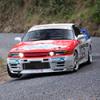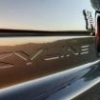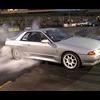R32 Gtst Brake Problem (Please Have A Gander)
Announcements
-
Similar Content
-
Latest Posts
-
Old Son, did you re-use the Holden ABS in the new shell or try a different module?
-
Yeah, nah. I had the actuator rod off it today. The arm will not move at all. Neither out, nor in. Yeah, you'd think so, but I've been thinking about that. Even when the actuator rod fell all the way off at the beginning of this saga, it would build more boost and faster in lower gears than it would in higher gears, and you'd think that that was the opposite of what should happen. But I strongly suspect that there is a thing with the gearing getting the revs to rise faster, that there must be some transient effect with the gas flow rate rising quickly, that you don't get with the more steady state case of the higher gears. Keep in mind - the gate is not shut in either of my weirdnesses. So things are not "normal". We normally think about a turbo spooling up (below the wastegate target) with the gate shut. I have all sorts of mental models running now where the gate is a little bit open, and having it stuck open allowing gas out while it should be going through the turbine has all sorts of weird effects (in these mental models). I'm thinking in the higher gears, the ex mani pressure builds to the point where enough gases spill out the wastegate to just prevent the pressure rising much more at all, or just creeping up, all the whole the revs are increasing and getting closer to the point where a gear shift becomes necessary.
-
Is it possibly wastegate actuator itself is sticking, or even the rod to flapper? Otherwise I reckon things are getting a bit rusty/worn Also odd it won't boost in 3rd to 5th, but will in 1st, I'd expect the other way around with it slightly open as there's more time on your way to redline for it to spin up
-
Does anyone know ow what these two plugs are for and if they should be unplugged? Just put the dash back together and can't remember if these were plugged in before or unplugged! (Blue and white plugs) 🤦🏽♂️
-
Did some FASTing ...got the impression that the actual part# was a moot point ; seems all of these hardlines for coolant are discontinued/NLA... like, I take it you're after the hardline that bolts onto to the manifold...that's NLA according to amayama & nengun .... ...just to clear up some confusion, they typically mounted the AAC valve to the intake manifold somewhere near a coolant passage, so the body of the valve heats up & holds it open when engine's up to temp - no coolant flows through the valve, it's a mechanical, thermal connection.
-








Recommended Posts
Create an account or sign in to comment
You need to be a member in order to leave a comment
Create an account
Sign up for a new account in our community. It's easy!
Register a new accountSign in
Already have an account? Sign in here.
Sign In Now